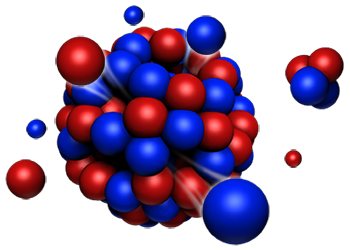Speaker
Description
The Spallation Neutron Source (SNS) has been in operation since 2006 at the Oak Ridge National Laboratory. SNS was designed to accommodate two upgrades: the accelerator proton power upgrade (PPU), and a second target station (STS). The PPU project is currently funded and underway, while the STS project is preparing for the US Department of Energy Critical Decision 1 review. The PPU will double the proton beam power from 1.4 MW to 2.8 MW. Both targets, the existing first target station (FTS) and added STS, will operate in pulsed mode, receiving short (< 1 µs long) proton pulses with ~46 kJ of energy per pulse. The FTS currently operates at up to 1.4 MW power, with pulse frequency of 60 Hz. After the completion of the PPU and the construction of the STS, the FTS will receive 2 MW at 45 Hz, and the STS will get 700 kW of the proton beam power at 15 Hz. High proton beam power and pulsed operation create challenges and constraints for the target design due to high local heating rates, high stresses, high activation, and decay heat. The FTS operates with a liquid mercury target. The initial STS concept was based on stationary tungsten target, with small proton beam footprint of only 30 cm2. However, target activation simulations and subsequent accident analyses found that high residual heat from activation products concentrated in a small target volume could lead to target meltdown in case of the most severe loss-of-cooling accident. This moved the current conceptual design of the STS to the rotating target. The rotating target consists of a segmented tungsten disk with a diameter of ~ 1.1m, with tungsten plates clad with tantalum, cooled with water, and covered with stainless-steel shroud. The target disk will contain twenty-one segments, will perform one turn in 1.4 s, and will be synchronized with the proton pulses so that the consecutive proton pulses will hit adjacent target segments. In the rotating target, the proton beam heating, radiation damage, activation, and decay heat are spread over much larger volume compared to the stationary target. Spreading the energy across a larger target volume greatly reduces the consequences of accidents. The current status of neutronics analyses for the STS target conceptual design will be presented.

